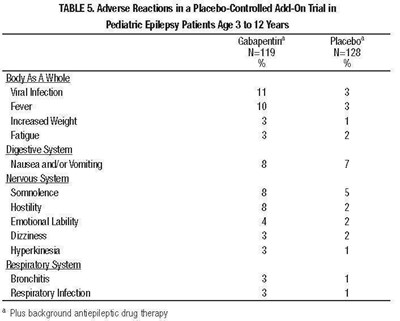Product Images Gabapentin
View Photos of Packaging, Labels & Appearance
Product Label Images
The following 12 images provide visual information about the product associated with Gabapentin NDC 31722-222 by Camber Pharmaceuticals Inc., such as packaging, labeling, and the appearance of the drug itself. This resource could be helpful for medical professionals, pharmacists, and patients seeking to verify medication information and ensure they have the correct product.
7d5ebe51-figure-06 - 7d5ebe51 figure 06

This is a medication label for Gabapentin capsules, with each capsule containing 10g of aaperin, USP. The recommended dosage and usage instructions are not provided. There is information on lot number, brand name, and quantity available. No further information is available to provide a sufficient description.*
7d5ebe51-figure-07 - 7d5ebe51 figure 07

This is a description for Gabapentin Capsules, USP. Each capsule contains 300mg of Gabapentin, and there are 100 capsules in the prescription. The recommended dosage and usage are not stated. The manufacturer is listed as EnncaGen Pramacess based in Hauppauge, NY 11788. The prescription can be obtained only with a prescription. The storage temperature is 68°-77°F.*
7d5ebe51-figure-08 - 7d5ebe51 figure 08

This is a medication label for Gabapentin, Capsules USP of 400 mg each. The label includes information such as dosage, usage, and storage. It is manufactured by Canber Pramaceuticals, Inc. The rest of the text seems to be gibberish and not related to the medication.*
fig1-2-3 - fig123

The text describes two studies conducted to evaluate the efficacy of L & Gabaparii and Gabapartin to reduce pain in patients with post-herpetic neuralgia (PHN). The pain scores were recorded weekly for each study and represented in Figure 1 and Figure 2. The proportion of responders (patients with >50% reduction in pain score) was calculated for each study and represented in Figure 3.*
table1 - img1

This table provides guidelines for dosing gabapentin based on a patient's renal function. The dosage ranges from 300-3600mg per day, depending on the patient's creatinine clearance, with varying dosing frequencies (BID, TID, QD). Patients on hemodialysis will require supplemental doses after each session. The table also presents an equation to estimate creatinine clearance, and notes that gabapentin has not been studied in patients under 12 with compromised renal function.*
table-2 - tab2

This appears to be a table showing the risk and relative risk for antiepileptic drugs compared to placebo in patients with epilepsy, psychiatric conditions, and other indications. It provides rates of events per 1000 patients and the relative risk and risk difference between drug and placebo patients for each indication.*
tab3 - tab3

This text provides a table of adverse reactions reported in clinical trials evaluating gabapentin effectiveness in treating postherpetic neuralgia. The table shows the percentage of patients experiencing different adverse reactions such as dizziness, diarrhea, dry mouth, and weight gain, among others, during treatment with gabapentin and placebo.*
tab4 - tab4

This is a description of adverse reactions in epilepsy patients over 12 years old who were given Gabapentin in Pooled Placebo-Controlled Add-On Trials. The text shows a table with percentages of various adverse reactions, including physical symptoms like fatigue, increased weight, back pain, and peripheral edema. Cardiovascular reactions include vasodilatation, while digestive system reactions include dyspepsia, dry mouth or throat, constipation, and dental abnormalities. There are also nervous system reactions such as somnolence, dizziness, and tremor, among others. Respiratory system reactions include pharyngitis and coughing, and skin and appendages reactions include abrasion. Urogenital system reactions include impotence, while special senses reactions include Diplopia and Amblyopia.*
tab5 - tab5

This is a table of Adverse Reactions observed in pediatric epilepsy patients between the ages of 3 to 12 years who were part of a placebo-controlled add-on trial. The table compares the occurrences of adverse reactions between Gabapentin and Placebo groups. The population sample for each group is provided (N= number of patients) and the percentage of occurrences of each adverse reaction is listed for each group. The adverse reactions are categorized by their effect on different body systems such as Body as a whole, Digestive System, Nervous System, and Respiratory System. Gabapentin and Placebo groups were also given background antiepileptic drug therapy.*
table-6 - tab6

This is a table that provides information on two controlled studies conducted to evaluate the effectiveness of Gabapentin in treating PHN (post-herpetic neuralgia). The table details the duration of the studies, the dosage of Gabapentin given to the patients, and the number of patients who received Gabapentin and the placebo. Study 1 lasted for eight weeks, and the patients received a dosage of 3600mg/day. Study 2 lasted for seven weeks, and the patients received either 1800mg/day or 2400mg/day of Gabapentin. A total of 336 patients received Gabapentin, and 227 patients received a placebo. Gabapentin was given in three divided doses (TID).*
* The product label images have been analyzed using a combination of traditional computing and machine learning techniques. It should be noted that the descriptions provided may not be entirely accurate as they are experimental in nature. Use the information in this page at your own discretion and risk.

